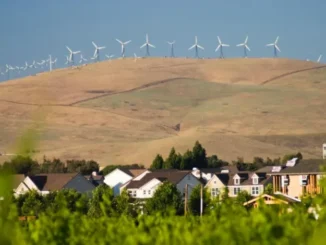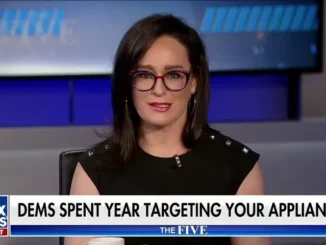
“If it is built, California’s High-Speed Rail would be the largest public works project in state history. That fact alone appears be intoxicating to state officials, in a perpetual quest to have California be the first state to do anything,” I reported in 2011. That’s how long California’s High Speed Rail has served only as a jobs program and a really bad joke on California voters and taxpayers.
“Even though high-speed rail has become nothing more than a pipeline project for grabbing big money and a big lie, Gov. Jerry Brown signed the rail bill Wednesday, sealing California’s economic fate. Because of the illegitimacy of the project’s intent, California taxpayers will be left holding the bill.”
I wrote that in 2012. Since then, the only thing that has changed is California Governor Gavin Newsom is now responsible for this High Speed Swindle.
The bill Brown signed in 2012 authorized $5.8 billion to start construction of only one high-speed rail line in the Central Valley, and included $2.6 billion in state rail bond funds, along with $3.2 billion in federal funds.
“But California will have to borrow every dime of that state money to build the high-speed boondoggle.”
“And that’s the only federal funding the state will receive for the entire $68-$135 billion project. The newest revised business plan claims to have reduced the cost of the project to $68 billion from $98.6 billion by expanding the 130-mile line from Fresno to Bakersfield, to Merced to San Fernando Valley, for a 300-mile segment. But many economists and rail experts project that the project could cost as much as $135 billion.”
This could have been written today but it wasn’t – this also is from 2012.
“Voters were deceived by the original ballot summary and language in Proposition 1A from 2008, but the state’s lawmakers seem to find that fact inconvenient. And, the entire project is lacking in private, public and debt funding to complete even the most minor operating segment.”
And in 2012, only 4 years after passage of Proposition 1A which authorized HSR, polls showed that voters wanted a re-do, and would have voted to kill high-speed rail if given the chance.
As I explained in 2012, the governor, legislators and the High Speed Rail Authority were (and still are) violating the law:
Prop. 1A states, “The high-speed train system shall be planned and constructed in a manner that minimizes urban sprawl and impacts on the natural environment.” But the impact of the rail system may actually create suburban communities around train stations within reasonable distances from urban areas and higher employment areas.
The train system will dissect both urban and rural communities which will be problematic, as well as a serious violation of the “natural environment.” The trains will travel through densely populated cities, but also through sensitive agricultural and natural areas in the state.
Other areas of the high-speed rail law are being violated as well:
* The California High-Speed Rail Authority must have all of the the funding ahead of time, before any construction starts on a new segment.
* The high-speed train system must operate on its own entirely, and in the black. That means operating profitably, and includes caveats of no government subsidy. The plan relies heavily on a projection of 100 million users by 2030, a notion that was created with manipulated data, and is absurd.
* Prop. 1A stipulates 11 requirements that must be met before funds can be released for the construction of a “corridor” or “usable segment.” Specifically, some of these requirements include actual high-speed train service, ridership, revenue projections and planned passenger service.
* The success of any legitimate transportation system must be based on connectivity. “For each corridor described in subdivision (b), passengers shall have the capability of traveling from any station on that corridor to any other station on that corridor without being required to change trains,” the law states. “Stations shall be located in areas with good access to local mass transit or other modes of transportation.” This means that, unless there are extensive connecting rail systems already in place in the high-speed rail destinations, cab companies, limo services and car rental companies should be lining up to rent space in the train stations. Commuters will not have the necessary train and bus systems to transfer to with the existing plan.
The law also calls for certified EIR’s for each segment of the system. Instead of dealing with the environmental issues, Brown tried to suspend the California Environmental Quality Act guidelines for the project. But that move brought about several lawsuits, which have held up important parts of the entire project.
In 2013, I reported U.S. Sen. Diane Feinstein’s husband Richard Blum, won the first phase construction contract for California’s high-speed rail.
In February 2019, President Trump called for California to return all federal rail funding, following Gov. Gavin Newsom’s state of the state address where the Governor vowed to kill High Speed Rail saying, “there simply isn’t a path to get from Sacramento to San Diego, let alone from San Francisco to LA.” However, Newsom flipped on his promise within the week, announcing he was allowing one odd segment of the rail project to be built in the Central Valley, which I call “the conjugal express,” going from prison to prison, Madera to Bakersfield. The goal for the strange and unnecessary rail line was so California would not have to return $3.5 billion to the federal government.
Globe contributor Thomas Buckley tells us “the California High Speed Rail Authority now has a sustainability consultant” with Arup. “Arup announced a three-year, $11.7 million contract earlier this month (it is also working on Central Valley station construction) and is tasked with handling ‘renewable energy modeling and procurement, climate change adaptation and resilience, setting sustainable design criteria, managing greenhouse gas and air quality emissions, carbon offsetting, and sustainability reporting.’”
If you thought the high speed rail swindle was going nowhere after 15 years of taxpayer funding without an operational train, this latest boondoggle contract must be payola – it really serves no other purpose other than to provide jobs and salaries to green totalitarians, courtesy of the California taxpayers.
What a swindle.
In “California’s Electric High Speed Rail: No Power, No Money, No ‘High Speed,’” we speculated if the high-speed trains will be powered by windmills, solar panels, cooking oil and algae since California’s electricity grid can’t even power the state on a hot day reliably without asking electric car owners to please refrain from plugging in.
*******
What Voters Approved in 2008
California voters approved Proposition 1A in 2008, the “Safe, Reliable High-Speed Passenger Train Bond Act for the 21st Century.” Here are some details:
* $33.5 billion cost. They approved a total cost of $33.5 billion for a high-speed rail system. The $33.5 billion was to be made up of a combination of 1/3 federal funds, 1/3 state funds and 1/3 private funds. Importantly, the investment from California taxpayers was limited to a $9.95 billion bond.
* S.F. to L.A. Voters approved a system connecting San Francisco to Los Angeles, with a trip time of two hours and 40 minutes, at a cost of $55 per ticket. But the plan has veered sharply inland from San Francisco to Los Angeles, over to the Central Valley, with a leg from Fresno to Bakersfield. And the cost of the trip jumped to $105.
* Ridership: 95 million. Even ridership numbers have been toyed with. Voters were told that there would be a ridership of 95 million passengers by 2030. Ridership estimates have decreased nearly three times since 2008, and they are still absurdly inflated. In the new report, they’re estimated to be as high as 36 million passengers by 2060 (page 5-17). That’s about a third of the Prop. 1A promise.
* Bond repayment. Repaying high-speed rail bonds will cost the state’s General Fund $647 million per year for 30 years, or approximately $20 billion for the $9.95 billion bond.



